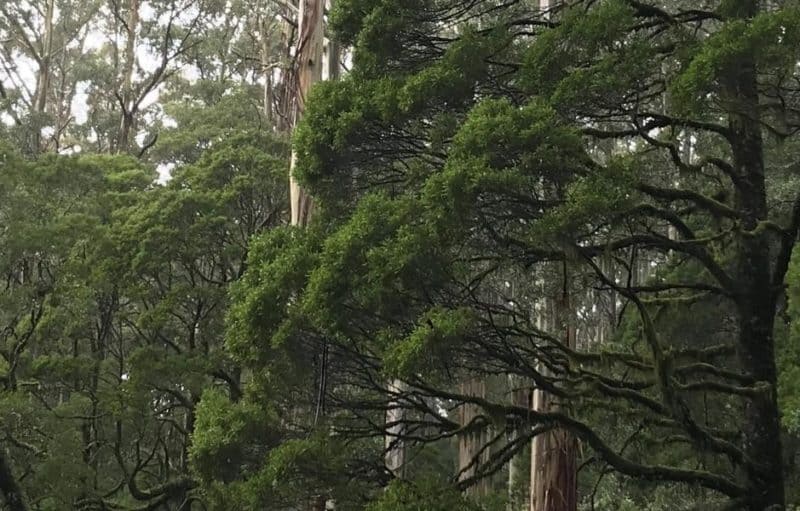PARK WATCH Article December 2021 |
Central west parks creation legislation drags as a new species is found in Wombat Forest, writes Executive Director Matt Ruchel.
The Andrews Government seems in no hurry to legislate the 50,000 hectares of new central west national parks it committed to creating in late June, even with a year left on the legislative clock. To date, the government has cited difficulties in getting boundaries mapped and undertaking detailed surveying – saying the parks will be legislated “as soon as practicable”. It could be as long as two years, well into the next term of government.
We remain alarmed by their plan to log significant areas of the proposed parks up until 2030, particularly in Mount Cole, Mount Buangor, Pyrenees and Wombat forests. Logging in an area slated for protection in a national park seriously undermines the intent of protection and defies final expert VEAC recommendations.
While far from ideal, it’s not unprecedented. In the 1980s the creation of parts of the Alpine National Park had clauses when it was legislated that that “once only logging to be carried out … after which areas are to be managed as part of the park”. Either way, if the commitment has any chance of delivering parks in the next decade they need to be legislated in one hit, as quickly as possible, ideally before the end of this term of government.
The delays entrench the Andrews Government as a laggard on national parks creation – the worst of any Victorian government in the last half-century, while other states, especially NSW and WA continue to expand their national parks estates.
If the Andrews Government can’t or won’t legislate this term, and is going to have any chance of making up make up lost time and ground, the fallback is a rock-solid election commitment to legislate in the first six months of a new term, with significant funding commitments for implementation and other much need additions to our reserves systems.
Meanwhile, logging continues at Mount Cole, and test drilling for gold has commenced in part of the Wellsford Forest. VNPA will maintain a close eye on what is happening in these areas, as again the community is left to carry the the burden of standing against the destruction of their local forests.
The current pre-logging forest survey program for threatened species does not apply to the Western Regional Forest Agreement area, seriously limiting capacity of relevant regulators to make sure important values are protected in areas proposed for native forest logging.
The need for detailed pre-harvest forest surveys has never been more important. In December 2020, Monash University reptile researcher Jules Farquhar, with his companions Wyn Russell and Nicholas Gale, discovered several individuals of Mountain Skink (Liopholis montana) in the Wombat State Forest. This is the first time this species has been found in the west of the state, once again highlighting the unique value of the Wombat Forest.
To date, Mountain Skinks have only been found at elevations between 900 metres and 1800 metres, with the site on the Lerderderg River having an elevation of approximately 620 metres. There are now two verified locations for this species in the Wombat Forest, with a second population found by Wombat Forestcare. The skink is currently being assessed to be recommended as endangered under the national Environment Protection and Biodiversity Conservation Act 1999.
The Mountain Skink was only described in 2002 and has a scattered distribution, largely found in rocky habitats in subalpine woodlands or open dry forests in southeast Australia. It is a smooth-scaled skink of medium size with a snout to vent length up to 111 millimetres. The primary colour is grey-brown, and most have a reddish-brown upper surface. They construct deep burrow networks beneath rocks and live in colonies, which is uncommon in the reptile world and appear to form stable pair bonds. The females give birth to four young. Their diet is omnivorous and includes seasonal fruits.
The newest find, along with the critically endangered Mount Cole Grevillea, the Powerful Owl, Greater Gliders and 370 other threatened species, continue to highlight the importance of these areas for Victoria’s natural heritage. The need for permanent protection and well-resourced management is more than established, and after decades of campaigning and a four year expert process, they should, in plain terms, just get on with it.
Did you like reading this article? You can read the latest full edition of Park Watch magazine online here.
Want to be kept up to date about this and other nature issues in Victoria? Subscribe to our email updates.
You can also receive our print magazine Park Watch four times a year by becoming a member. Find out more here.
